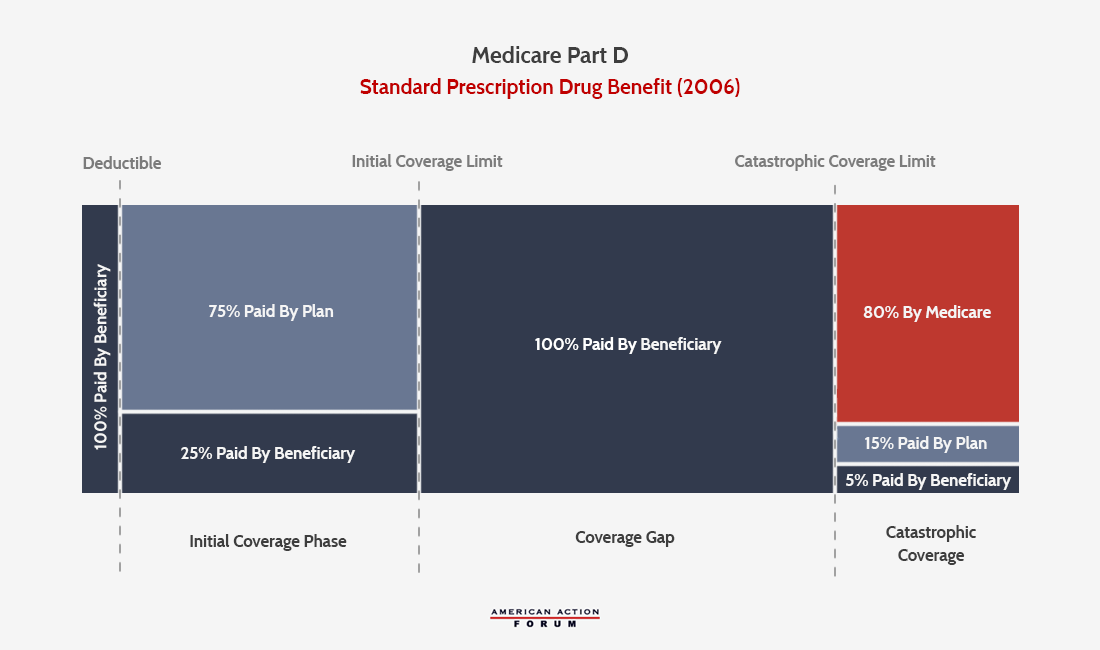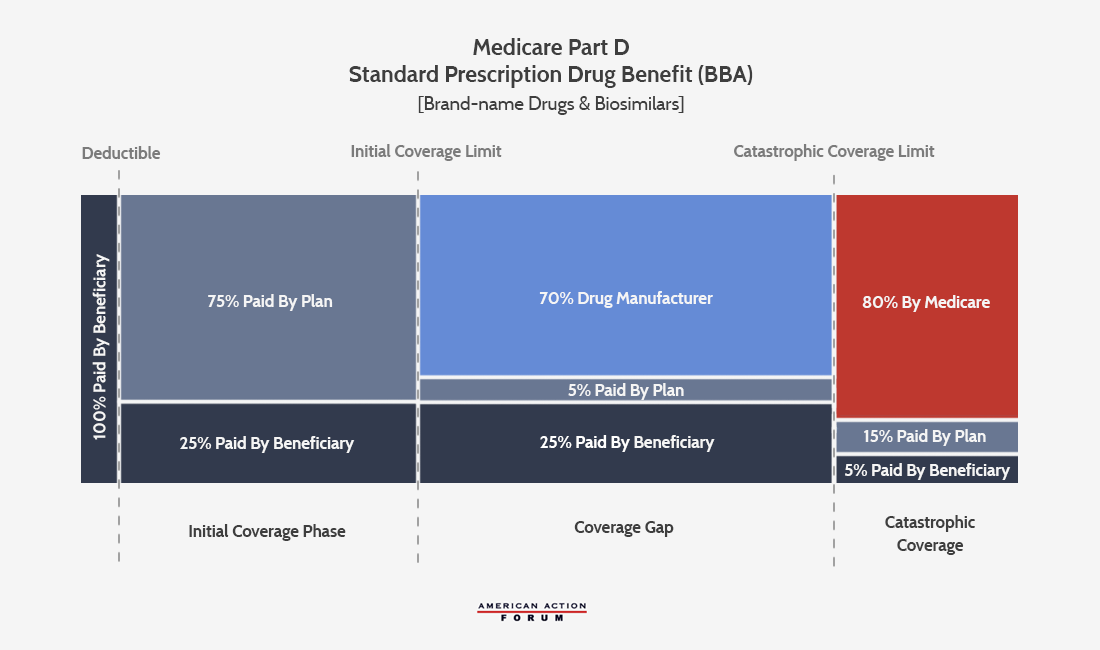The Daily Dish
August 15, 2018
Incentives and the Part D Drug Program
Eakinonmics: Incentives and the Part D Drug Program
The Medicare Part D program – which offers the plans that cover the cost of seniors’ outpatient prescription drugs – has been the most successful federal entitlement program, with high degrees of beneficiary satisfaction and budget costs below what was originally anticipated. These successes stem from the competitive design: Private prescription drug plans compete for seniors by offering combinations of low premiums and coverage of their preferred drugs. Simultaneously, they negotiate with manufacturers for low drug prices and pharmacies for wide distribution networks.
It is a good program. This week, AAF’s Tara O’Neill Hayes examines a new proposal to make further improvements.
Here’s the issue in three pictures, courtesy of Hayes. The image below details the standard benefit design. Moving left to right, beneficiaries covered 100 percent of their drug costs until they hit their deductible. After that, 75 percent of the costs were paid by the plan and beneficiaries paid a co-pay of 25 percent. This mix stayed in place until total spending hit the so-called “donut hole,” where once again seniors were on the hook for the entire cost of drugs. Finally, seniors could hit the catastrophic limit, at which point the government paid 80 percent of all further drug costs, the plan picked up 15 percent, and seniors paid 5 cents on every further dollar. It wasn’t perfect, but both seniors and plans had strong incentives to control costs, and taxpayers were somewhat limited in their exposure to budgetary costs.
But, as is usually the case, temptation corrupted the standard design. Over time, Congress changed the design to relieve seniors of costs in the donut hole – tempting for any elected politician – and shifted the private sector costs from insurance plans to manufacturers.
This design is shown below, where seniors are limited to 25 percent of the costs in the donut hole, 5 percent get picked up by their insurance plans, and fully 70 cents on every dollar is paid for by a new source: drug manufacturers.
This change damaged the program’s incentives in two ways. First, forcing the manufacturers to pay transformed the program in part to a tax-and-spend clone of the remainder of the failed entitlement state. The federal government simply took money from pharmaceutical companies (again, tempting for any elected politician) and bought drugs for seniors. The flip side of this structure is that it limited the incentives for insurers to bargain effectively to lower the cost of drugs – especially the expensive drugs that put seniors into the catastrophic part of the benefit.
Hayes discusses the potential for better incentives in the form of a new benefit design (below). It is designed to keep the manufacturers initially on the hook for the same dollars as they are currently. But it shifts their responsibility to 9 percent of the catastrophic costs of drugs. Put differently, if the highest-cost drugs (e.g., oncology drugs) that put patients into the catastrophic area go up in price, manufacturers will pay more. This is a good incentive to limit the costs of those drugs.
Seniors continue to have a deductible and 25 percent co-pay, but face zero in the way of catastrophic drug costs. Taxpayers are also protected because the federal government picks up only 20 percent of the catastrophic costs.
The remaining costs – 75 percent after the deductible and 71 percent of catastrophic costs – are the responsibility of the plan. That’s a powerful incentive for tough negotiating all around. (And recall that premiums and government subsidies will ensure that the plans remain solvent.)
It is a powerful proposal to make the best entitlement program even better. And it arrives just as Congress and the administration must get serious about designing entitlements embedded with strong incentives to serve beneficiaries while achieving financial sustainability.
Fact of the Day
If the Federal Communications Commission were to shift the broadband speed threshold slightly, to 24 Mbps download and 2 Mbps upload from 25/3, then nearly 1.5 million more people would have access to broadband.













